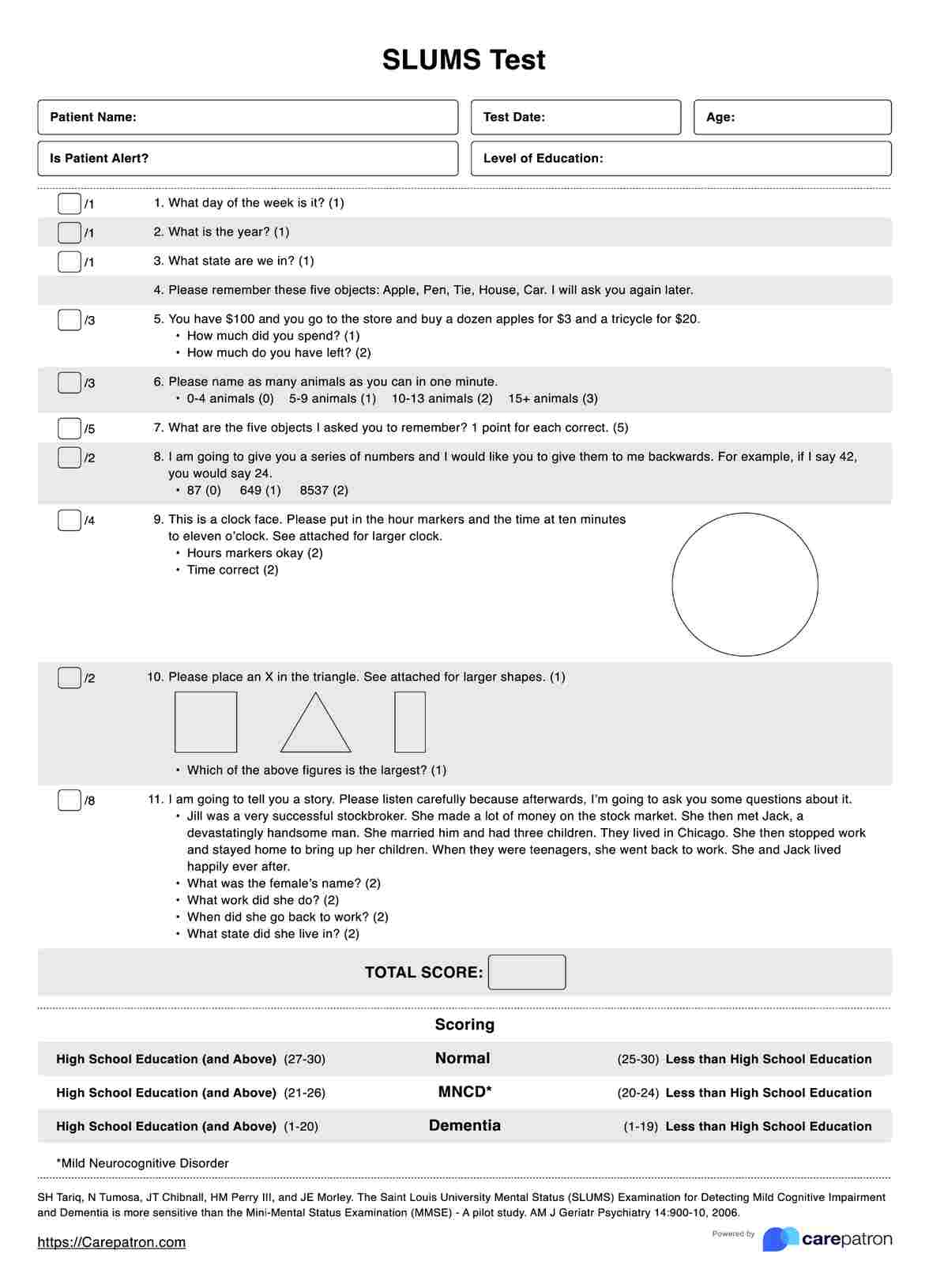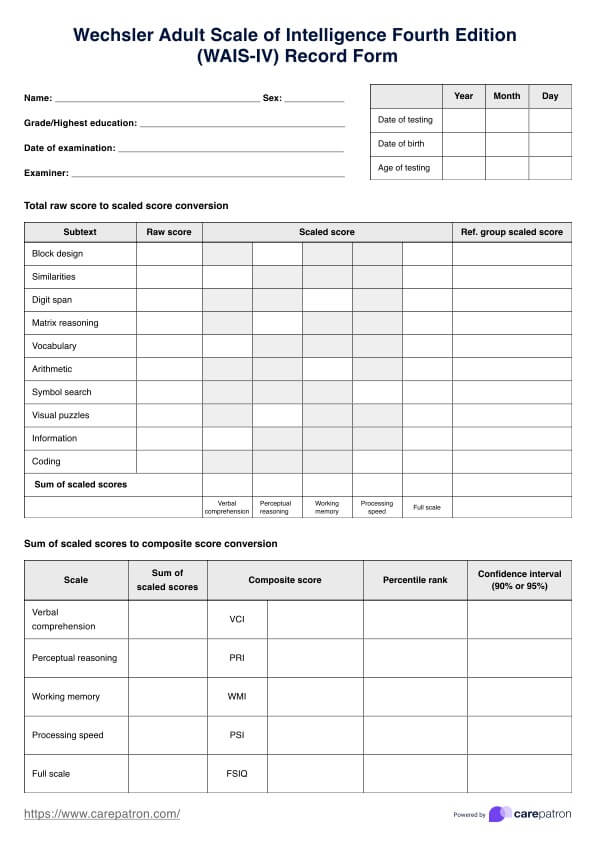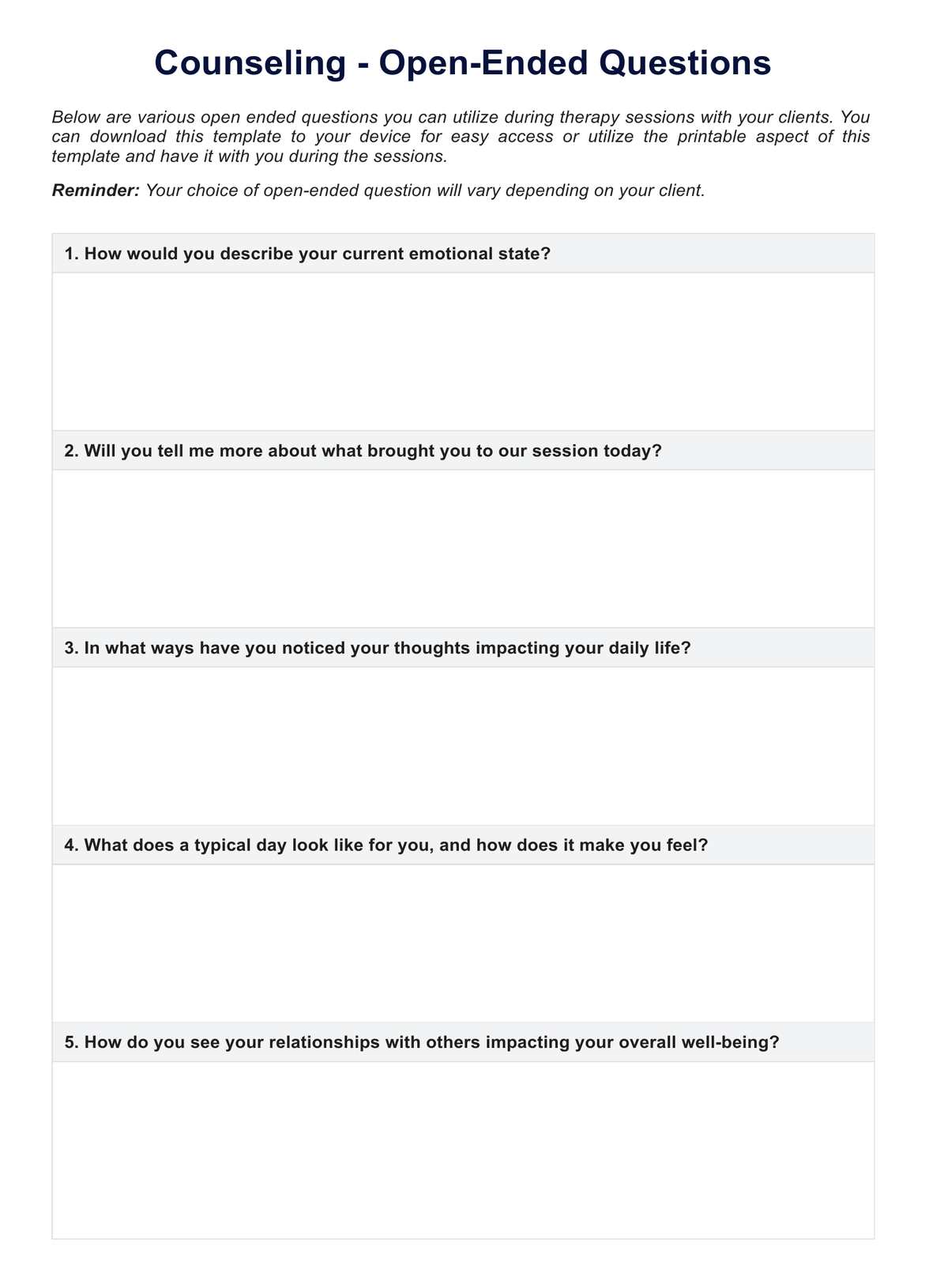FADIR Test
If you have a patient who is complaining about pains in their hip, conduct the FADIR Test to assess their potential condition. Are they dealing with a labral tear? Or perhaps a hip impingement? You’ll be able to get to the bottom of things by conducting this test!


What is the FADIR Test?
If a patient sets up an appointment with you because they are dealing with pain in their hips, one way to gauge them and their pain is to conduct a physical test. There are numerous ways of gauging a person’s hip problems, such as the FABER Test (which can detect potential problems like a Sacroiliac Joint Disease) and the Stinchfield Test (which can be conducted to see if a patient has Femoral Acetabular Impingement or Athletic Pubalgia). There are many tests that you can choose to conduct, but the one that we will focus on in this guide is the FADIR Test.
The Flexion, Adduction, and Internal Rotation Test, or for short, is a type of physical examination that healthcare professionals conduct in order to gauge a patient for any hip joint pathologies they might be suffering from, such as Labral Tears, Iliopsoas Tendonitis, or even Femoroacetabular Impingement Syndrome.
This particular test involves the flexing and rotating of the hip deliberately while the professional listens to and observes the patient for any signs of pain as they conduct the techniques involved in this test. Hips don’t lie, so if they are in pain while you perform this test on them, then it’s likely that they have a hip pathology.
FADIR Test Template
FADIR Test Example
How to conduct the FADIR Test
The FADIR Test is technically a physical examination technique. It’s easy and quick to do and doesn’t require any special equipment in order to conduct it. All that the practitioner needs is a comfortable flat surface, preferably an examination table or bed (the latter might be the better choice).
Once the practitioner has a flat surface that a patient can lie down on, then they’re all set to conduct the test! Here is what they need to do:
- Have your patient lie down on the examination bed in a supine position (they have to be facing up). Make sure that their legs are fully extended.
- Once the patient is in a supine position, pick whichever side of the patient seems to be most affected by pain, then stand before the hip.
- Gently lift the patient’s leg toward their chest.
- As you are lifting the leg, flex the knee by 90 degrees, with the hip in a flexed position.
- Then, adduct the hip by gently moving the leg toward the midline of the body, while keeping the knee flexed.
- Then, do an internal rotation of the hip by rotating the leg toward the opposite side of the hip. Make sure the knee is still flexed while you do this.
How to interpret the results of the FADIR Test
While you are conducting the test on your patient, make sure to ask them how they are feeling. Tell them not to hesitate to tell you if they are in pain. You may also apply a little pressure or resistance on the leg to elicit any pain or discomfort.
If the patient does not feel any pain or discomfort at all, even if you exerted a little pressure, that means the test is negative and the patient is okay.
If the patient mentions that they feel pain or discomfort at any point while you are conducting the test, then the test is positive. Here are some of the possible problems they might be dealing with:
- Problems with their pubofemoral ligament (if they felt pain during the adduction)
- Labral tears (if they felt pain during the hip flexion)
- Problems with their hip joint capsule or labrums (if they felt pain during the internal rotation of the hip)
Though, do note that whether they get a negative or positive result, the next step would be to endorse them for a more comprehensive examination that will involve other tests. Perhaps other tests might find other ailments. If they are positive for the FADIR Test, other tests can help confirm the suspicions of hip pathologies that the patient is dealing with.
When is it best to conduct the FADIR Test?
If a person schedules an appointment with you to discuss pains in their lower extremities, and they mention during the appointment that they feel pain specifically in their hips, then that’s the best time to have them take the FADIR Test. You want to gauge them as soon as possible in order for something to be done to help them because everyone needs their lower extremities to be healthy in order to do their daily work and other important things that they routinely do.
We also mentioned earlier that the FADIR Test should be included in a comprehensive examination of the patient. This is so the results of the FADIR Test can be supported or refuted by other tests. Even if they tested negative, that doesn’t mean they don’t have any hip problems. Other tests might be able to detect problems that the FADIR Test could not, and vice versa. If they tested positive, other tests, including imaging tests, can confirm if the suspicions are true, and then diagnose accordingly.
Now, if you’re wondering how you can find out if the FADIR Test should be added to a comprehensive examination, make sure to check the patient’s medical records. If their medical records show that they are at risk of developing or are already developing hip pathologies, then you might want to add this as one of the tests to be conducted.
Who can conduct the FADIR Test?
Since the FADIR Test is a physical examination technique, it can be conducted by the following healthcare professionals:
- Physical Therapists
- Physiotherapists
- Orthopedists
- Rheumatologists
It is best for the FADIR Test to be conducted by professionals who are highly trained and experienced when it comes to assessing musculoskeletal issues, diagnosing them, as well as treating them. The reason for this is that they will know how to properly perform the actions required by this test. They will no exactly how gentle they should be, and if they need to apply pressure, they know how much or how little they should apply.
While the FADIR Test is normally safe, if an inexperienced person or non-professional attempts this, it might aggravate the possible conditions that the patient is already dealing with, which should not happen.
Besides the aforementioned professionals, chiropractors can use this. They are knowledgeable about the skeletal structure, and they can treat patients by adjusting their bones by simply using their hands and a few tools.
Sports physicians who are trained in orthopedic practices can also conduct this technique on athletes to gauge their respective hip conditions, and make recommendations like training adjustments or rehabilitation in order to address it and ensure it doesn’t get worse.
.png)
What are the benefits of the FADIR Test?
It is an inexpensive test, and it’s easy to accomplish!
As stated earlier, the FADIR Test does not require any special equipment in order for a professional to conduct it. All that is needed is a comfortable examination bed, and the professional is good to go.
The instructions are also simple, so the professional should have no problem conducting the technique and they should be able to accomplish it within five minutes. The test can also produce results as soon as it’s done and the results can be shared with other clinicians who will conduct other tests on the patient.
It can help professionals make decisions regarding diagnoses and treatment.
Speaking of sharing results with other clinicians, doing so will help the whole team refute or support the findings of all the tests conducted on the patient. Let’s say that the FADIR Test you conducted is positive and may indicate a certain hip pathology, and then the other tests pointed to the same thing; then, an official diagnosis can be made, and the necessary treatment plan that’s fit for the patient can be developed.
The test can identify which specific parts of the hip have possible pathologies.
Since you will be asking the patient to say if they are in pain during the test, you will know where exactly the pain is depending on what part of the test you’re at. Certain conditions are tied to certain parts of the hip. If they felt pain while you were performing the adduction, it’s likely that the pain is in their pubofemoral ligament. If they felt pain during the hip flexion, then it’s possible that they are suffering from labral tears. If they felt pain while you were making an internal rotation of their hip, then it’s possible that they have issues with their hip joint capsule.
Commonly asked questions
No. It’s highly recommended that you include the FADIR Test as part of a more comprehensive examination that includes other tests. This is so you can cover all possible bases and you have enough results even from other tests to confirm possible issues that you suspect a patient of having based on the FADIR Test results.
That depends on the patient. Whatever pain a patient feels while the professional is performing this examination technique will come from the issues they’ve been dealing with prior to setting an appointment with you. In the context of the test, the pain is good only because it will help professionals locate where exactly in the hip is the pain coming from.
Aside from causing mild discomfort because of its nature, the FADIR Test is generally not risky. If a greenhorn or a non-professional is conducting it, then that’s the time it becomes risky because they don’t have the experience and the know-how to properly conduct the technique. They might end up aggravating the problem. That’s why it’s best for highly trained and experienced professionals to conduct this.


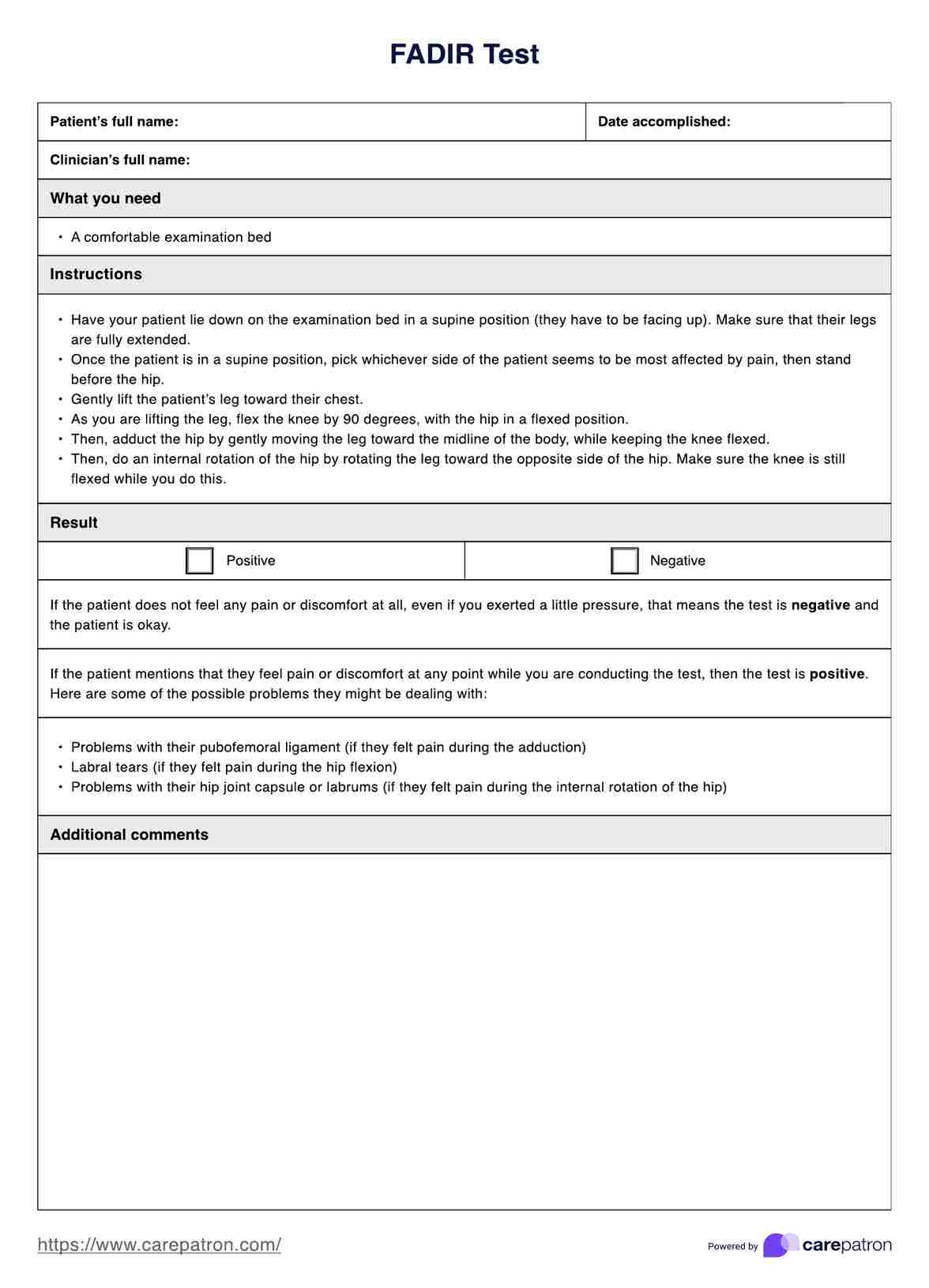
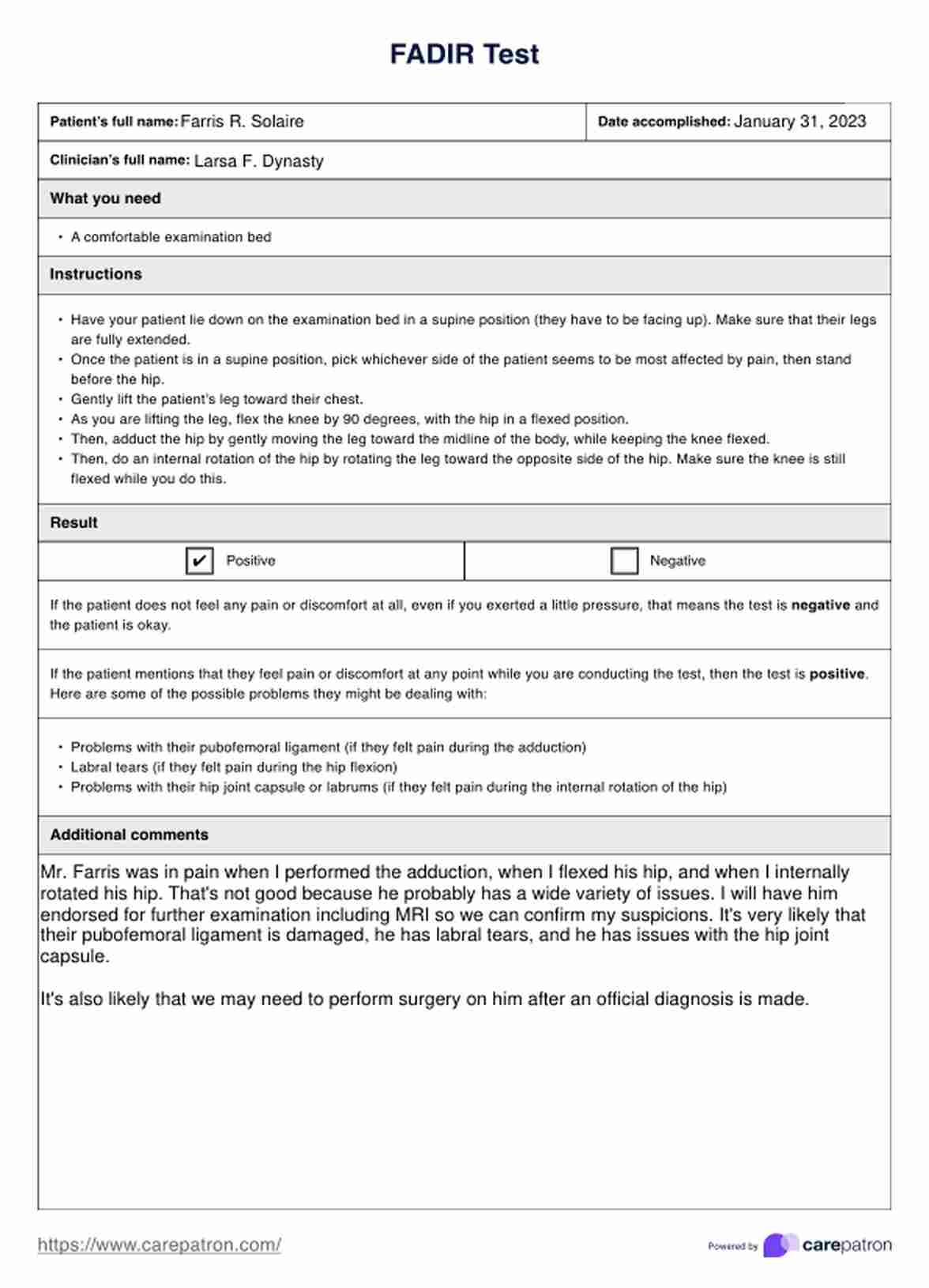













-template.jpg)




























































































